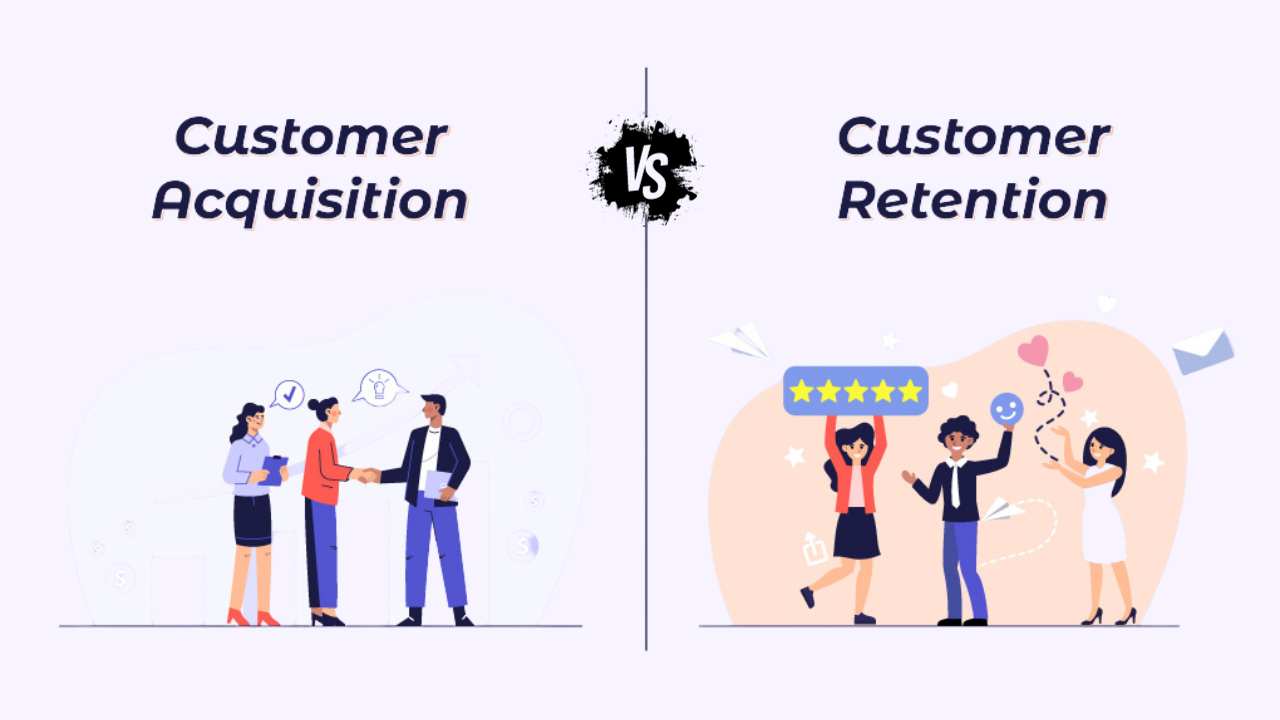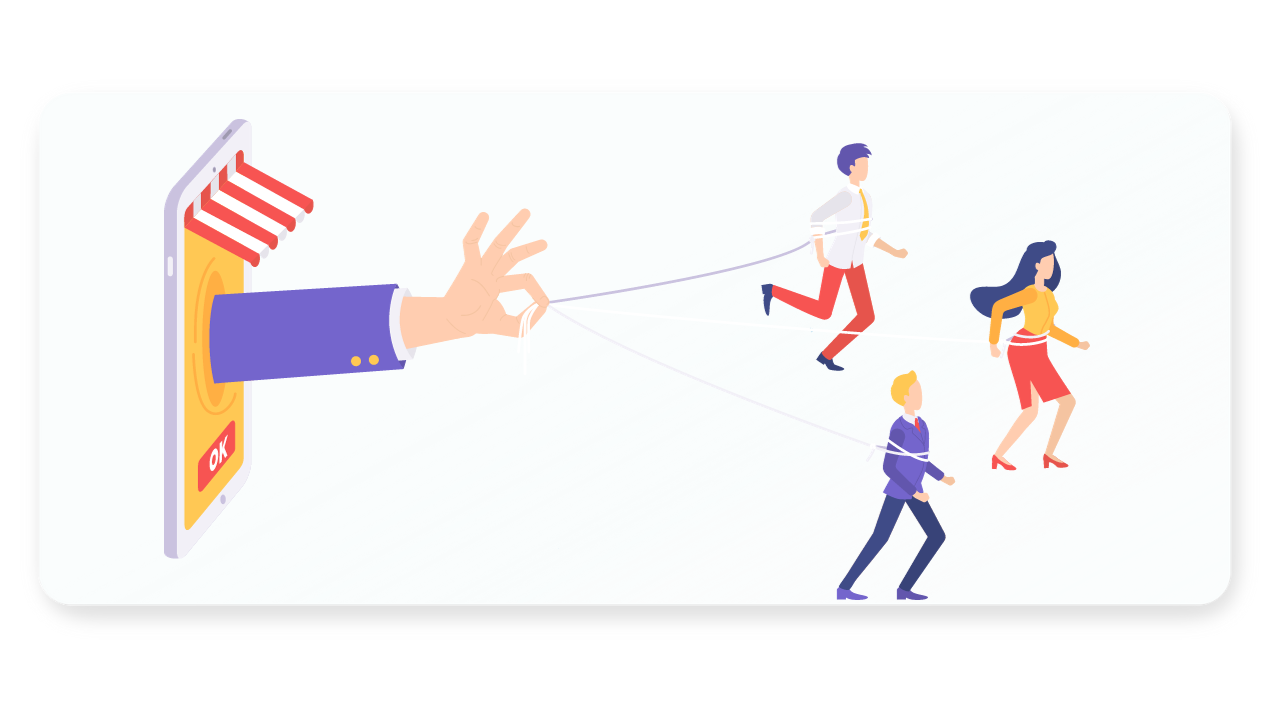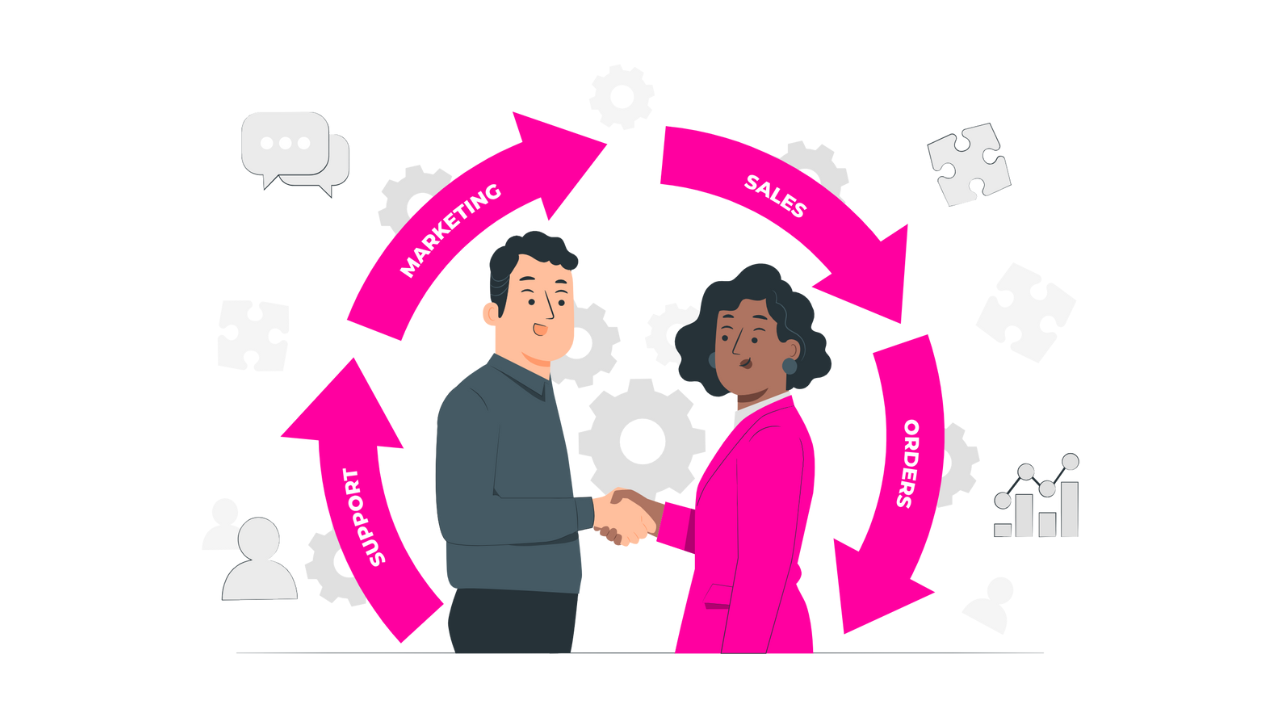
In the bustling business world, two essential terms often come into play—customer retention and acquisition. But what do they mean, and why are they crucial for your business?.
Companies often face the challenge of allocating resources between retaining existing customers and acquiring new ones.
Let's break it down in simple terms.
Customer Acquisition: Making New Friends
Imagine your business is a party, and you're making new friends. Customer acquisition is like inviting people to join the party. It's the process of gaining new customers or clients for your business. You're putting your business out there, hoping to attract attention and turn curious onlookers into loyal patrons.

1. Expanding Market Reach:
Acquiring new customers is essential for business growth. It allows you to tap into new markets, demographics, and customer segments, ensuring a diverse and expansive customer base.
2. Embracing Innovation:
New customers often bring fresh perspectives and demands. Embracing the challenge of meeting these needs can drive innovation within your products, services, and overall business strategy.
3. Adapting to Market Trends:
Consumer preferences and market trends evolve over time. Acquiring new customers helps your business stay agile and responsive to these changes, ensuring relevance in a dynamic marketplace.
🤔Why It Matters:
-
Growth: Acquiring new customers expands your business and helps it grow.
-
Fresh Ideas: New customers bring fresh perspectives, ideas, and revenue.
🤔How to Do It:
-
Marketing Magic: Use advertising, social media, and other strategies to introduce your business to potential customers.
-
First Impressions: Make a killer first impression to entice people to choose your business over others.
Customer Retention: Keeping the Party Going
Now, imagine the friends you made at the party. Customer retention is like maintaining those friendships. It's all about keeping the customers you've already won over happy and satisfied, so they keep coming back to your business.

1. Loyalty Pays Off:
Retaining existing customers is more cost-effective than acquiring new ones. Loyal customers not only contribute to a steady revenue stream but also act as brand advocates, driving referrals and positive word-of-mouth.
2. Deepening Relationships:
Existing customers have already experienced the value of your products or services. Building on these relationships can lead to upselling, cross-selling, and increased customer lifetime value as you continue to meet evolving needs.
3. Trust and Familiarity:
Old customers are familiar with your brand, products, and service standards. This familiarity breeds trust, making it easier to introduce new offerings or updates, and reducing the friction in the buying process.
🤔Why It Matters:
-
Stability: Retained customers provide a stable foundation for your business.
-
Word of Mouth: Happy customers become your business's biggest cheerleaders, bringing in more friends (customers).
🤔How to Do It:
-
Top-Notch Service: Offer excellent customer service to make your customers feel valued.
-
Stay Connected: Regularly check in with your customers through newsletters or updates to keep your business fresh in their minds.
The Balancing Act: Why You Need Both
1. Data-Driven Insights:
Utilize data analytics to understand the behaviors and preferences of both existing and potential customers. This insight can inform personalized strategies for retention and acquisition.

2. Integrated Marketing Strategies:
Integrate your marketing efforts to cater to both retention and acquisition. Craft targeted campaigns that speak to the unique needs of each audience, showcasing the value you bring to both existing and potential customers.

3. Customer-Centric Approach:
Prioritize a customer-centric approach in both retention and acquisition efforts. Tailor your communication, offers, and experiences to meet the specific needs of each group, fostering satisfaction and loyalty.

Conclusion
In the ever-evolving landscape of business, a harmonious blend of old customer retention and new customer acquisition is the recipe for success. Recognize the unique strengths and opportunities each approach presents, and tailor your strategies to create a holistic and sustainable business model.
By finding the right balance, your business can thrive, engaging both loyal advocates and enthusiastic newcomers on the path to long-term success.


